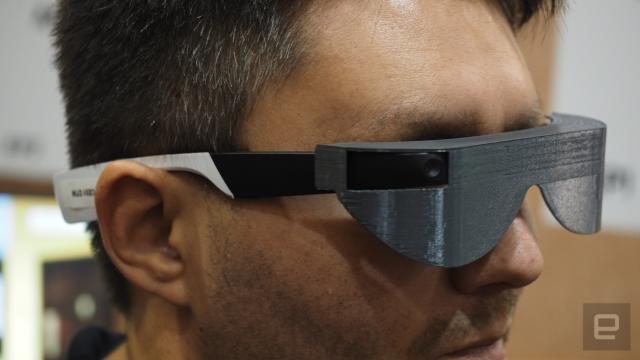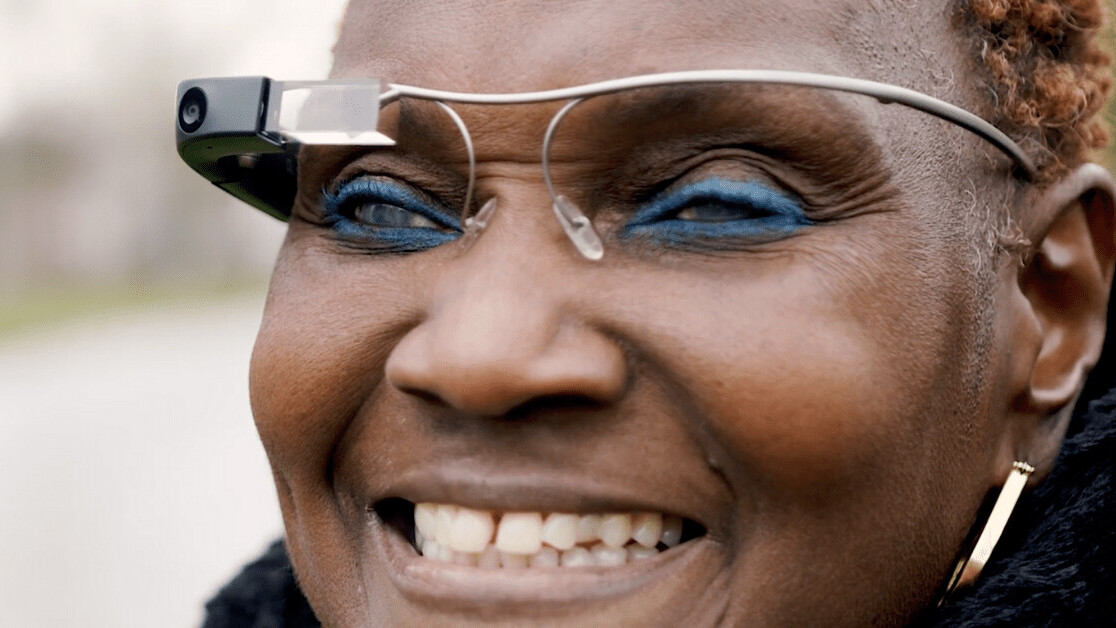OCR Devices for the Blind: Breaking Barriers with Optical Character Recognition
OCR Devices for the Blind: Breaking Barriers with Optical Character Recognition
Blog Article
Innovative Solutions in Assistive Modern Technology for Visual Problems
The landscape of assistive modern technology for aesthetic problems is progressing quickly, offering a variety of ingenious solutions that improve availability and independence. From advanced smartphone applications that facilitate navigating to wearable tools made for real-time support, these tools are reshaping the experiences of those with visual impairments. In addition, the combination of wise home innovations and academic sources has the prospective to cultivate higher community engagement. However, the implications of these improvements increase critical concerns concerning their ease of access and efficiency in diverse contexts, necessitating a closer examination of their wider impact.
Advancements in Mobile Phone Applications
Over the last few years, innovations in smart device applications have actually dramatically transformed the landscape of assistive technology for individuals with visual disabilities. These applications utilize the effective sensing units and capacities of modern mobile phones to give customers with tools that boost self-reliance and access in their everyday lives.
Significant among these technologies are applications developed for item acknowledgment, which make use of the mobile phone's video camera to determine items and give spoken summaries. Such functions equip customers to browse their environments better, whether identifying products in shops or locating individual valuables at home. In addition, text-to-speech applications have actually improved drastically, allowing users to catch published text via their device's cam and receive split second sound comments, thereby facilitating reading and understanding.
Community-driven applications have fostered social interaction and resource sharing among individuals with aesthetic problems, creating an encouraging network that enhances their high quality of life. Overall, smart device applications have become crucial allies in advertising freedom and availability for individuals with aesthetic impairments.
Wearable Tools for Navigating
Wearable tools for navigating have become a groundbreaking solution for individuals with visual impairments, offering hands-free help that improves wheelchair and alignment. These tools usually utilize advanced innovations, consisting of GPS, ultrasonic sensing units, and synthetic intelligence, to give real-time comments and instructions to users as they navigate their environment.
One remarkable instance of wearable navigating innovation is clever glasses, which can spot challenges and relay auditory or haptic comments to the wearer, enabling safe and reliable motion in numerous setups. Various other devices, such as belts and vests outfitted with sensors, can similarly notify users of their environments by giving informs about nearby items or changes in terrain.
In addition, many wearable tools integrate with smartphone applications, allowing users to tailor their navigating choices and receive customized route ideas. This customization can significantly improve the user experience, encouraging people to take a trip with higher self-confidence and self-reliance.
As technology continues to develop, the capacity for wearable navigating devices to enhance the top quality of life for people with aesthetic disabilities continues to be significant, leading the way for more obtainable and comprehensive environments.
Smart Home Innovation Combination

Additionally, smart home appliances furnished with tactile interfaces or auditory feedback provide user-friendly communications that cater particularly to the requirements of those with aesthetic problems. As an example, smart refrigerators can introduce their contents and expiration days, while clever ovens can assist customers through the cooking procedure with audio directions.
Home automation systems, such as clever buzzers and protection cams, use assurance by enabling users read to receive informs and access live feeds via their mobile gadgets, improving personal security (AI-powered visual aids). Furthermore, assimilation with tablet computers and smartphones makes certain that users can handle their home setting from anywhere within their properties
As smart home modern technology continues to develop, it holds the potential to change the living experiences of individuals with aesthetic impairments, fostering self-reliance and improving top quality of life in a significantly connected world.

Educational Devices and Resources
Accessibility to reliable instructional devices and resources is vital for individuals with visual problems, as it empowers them to involve fully in their understanding experiences. Different assistive modern technologies have actually been created to enhance accessibility and foster independent discovering.
In addition, educational software application especially developed for aesthetically impaired users offers functions such as high-contrast settings and personalized message sizes. These devices suit varied knowing designs and make sure that trainees can tailor their instructional experience to their needs.
Furthermore, accessibility to digital libraries and audio publications broadens the range of readily available knowing products, making it possible for trainees to explore subjects comprehensive without the limitations enforced by typical print sources. Collaborative systems that integrate ease of access functions additionally facilitate group jobs, ensuring that aesthetically damaged pupils can add meaningfully along with their peers.
Area Support and Engagement
A durable network of community assistance and interaction is crucial for people with aesthetic impairments, promoting a comprehensive environment where they can flourish. Community organizations, local advocacy groups, and volunteers play a critical duty in giving resources, info, and companionship, which are crucial for enhancing the high quality of life for those affected by visual impairments.
Interaction activities check it out such as workshops, social occasions, and support groups not only promote skill growth however likewise promote social interaction, lowering sensations of isolation. These campaigns urge people to share experiences, successes, and difficulties, consequently strengthening neighborhood bonds. Furthermore, collaborations with neighborhood businesses can cause higher ease of access in public spaces, additionally integrating people with visual impairments right into the area.
Modern technology additionally improves neighborhood interaction with on-line systems that use digital support teams and resources, permitting people to connect no matter geographical barriers. By utilizing both electronic and in-person services, communities can develop a detailed assistance network. Eventually, cultivating collaboration amongst different stakeholders-- consisting of households, instructors, and health care experts-- makes certain that individuals with aesthetic problems obtain the all natural assistance essential to navigate daily life effectively and with self-respect.
Conclusion
Cutting-edge services in assistive innovation for visual disability significantly improve the high quality of life for individuals dealing with these obstacles. The combination of smartphone applications, wearable tools, wise home technology, and educational devices cultivates higher freedom and access.
The jobs in optometry field landscape of assistive modern technology for visual impairment is evolving quickly, offering an array of ingenious remedies that boost availability and independence. Community-driven applications have actually promoted social interaction and source sharing amongst people with visual problems, producing a supportive network that enhances their quality of life. In general, smartphone applications have actually ended up being essential allies in advertising freedom and access for people with visual impairments.
Numerous individuals with aesthetic disabilities are finding greater autonomy with the combination of smart home modern technology.Ingenious solutions in assistive technology for aesthetic disability substantially improve the quality of life for individuals facing these obstacles.
Report this page